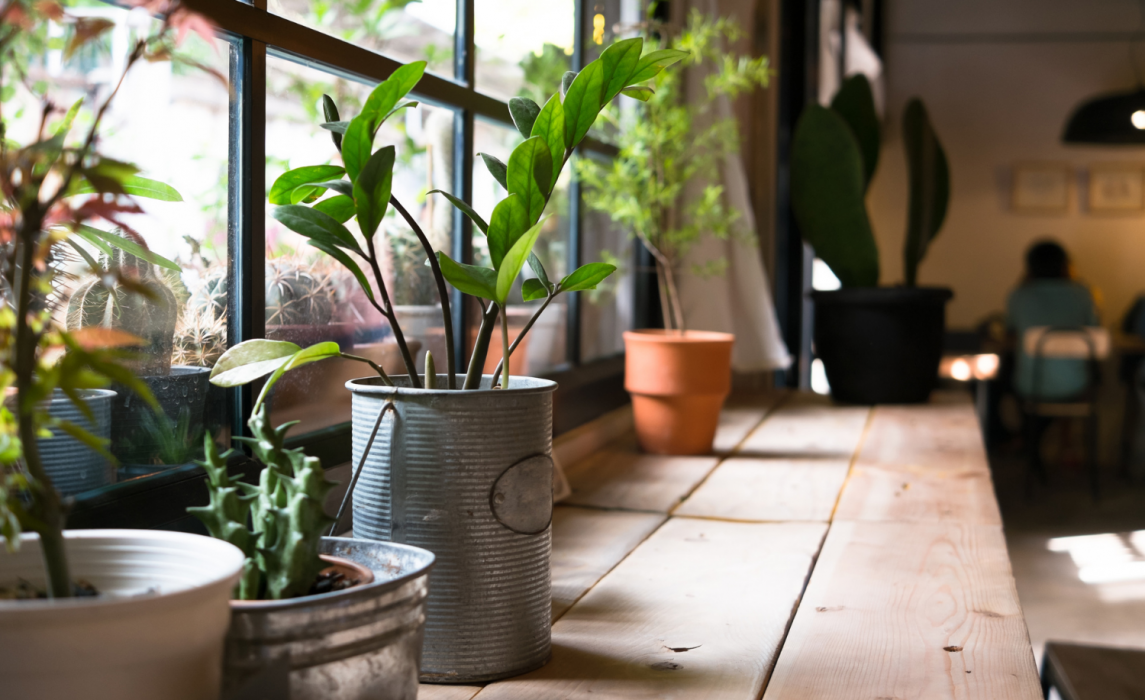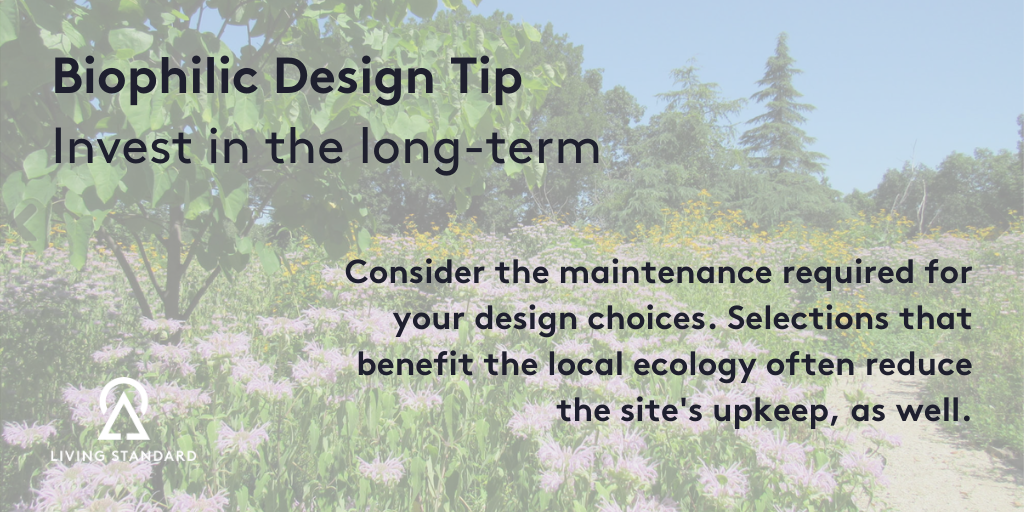
The global pandemic has highlighted the multitude of benefits we receive from being in nature, even if it is solely a view of vegetation from a window. And as we spend more time indoors by necessity, the lessons of landscape architecture, social science, and sustainable design have become all the more important in maintaining healthy lives. One of the clearest examples of this is the evolving focus on biophilic design, which seeks to integrate nature into our indoor spaces.
Biophilic design references the biologist and naturalist Edward O. Wilson’s Biophilia hypothesis, which suggests that “humans possess an innate tendency to seek connections with nature and other forms of life.” Associated benefits include enhanced creativity and cognitive functioning, reduction in anxiety and stress, and improvement of our overall health and well-being, among others. Landscape architects have practiced this for years, and social scientists have begun to demonstrate just how powerful this can be for our quality of life.
Humans possess an innate tendency to seek connections with nature and other forms of life.
So what makes good biophilic design and how can we get started? It’s an important question to understand since we spend roughly 90 percent of our time indoors already, and the COVID-19 pandemic has only exacerbated this fact. While many books and articles exist on biophilic design, we can also refer to the SITES Rating System for guidance. SITES, a tool for creating sustainable landscapes and other outdoor spaces, links design with ecology, connects people to place, and improves health and quality of life in a community. While SITES applies to everything outside of a building, it intentionally works to blur the lines between our indoor and outdoor spaces like this SITES certified project in downtown San Francisco, CA.
Companies had already begun designing outdoor work spaces that invite their employees outside to be productive, to collaborate with co-workers, or simply for a much needed mental break. And as the need for social distancing continues, they may become the norm as buildings attempt to reopen safely. Based on the learnings from SITES, here are a few suggestions to get started creating a biophilic-inspired space:
Evaluate and understand before designing. While it may seem obvious, understanding the space’s context, intention, and needs is essential for creating a thoughtful project. In SITES, for example, the team is required to develop performance-based goals (e.g., desired health outcomes), along with completing a comprehensive site assessment to get the full scope of the features, materials, sounds, and sunlight that make the project unique. A biophilic project celebrates its location — ensure you know what you’re working with!

Keep nature in view. Design interior spaces, particularly common spaces like cafeterias and conference rooms, with ample daylight and views of vegetation. Access to nature, whether physical or visual, can benefit children as well as adults. For example, Dr. Kuo (a former SITES technical advisor) concluded that “green outdoor settings appear to reduce ADHD symptoms in children across a wide range of individual, residential, and case characteristics.”

Celebrate local connections. Using local natural materials indoors, such as weathered wood or historically significant pieces salvaged from the site, can serve as a visual connection to nature, promote regional identity, and honor the history of the site. A space with a good visual, non-visual (e.g., auditory, olfactory), and material connection with nature can provide numerous experiences and benefits.

Integrate green infrastructure. SITES encourages the use of green roofs like this one at the SITES certified Green Wise headquarters, rain gardens, and other green infrastructure to manage stormwater, thus creating an amenity for employees and visitors where they can view natural processes in action, rather than the grey infrastructure strategies which typically use concrete and hide these natural systems from view. This work can be seen in action in offices, such as the Perkins+Will Atlanta office (a SITES certified project) and at hospitals like the one at the University of Texas at Austin’s Dell Medical School (also a SITES certified project).

Blur the indoor/outdoor lines. As proven by the human health experts who informed the SITES Rating System, any access to nature, whether in a park or natural area, or simply viewing green space during daily life, positively affects mental health and facilitates social connection — so don’t be shy in creating more spaces that encourage interaction outdoors. Think about seating, microclimates including noise, shade and wind, and also what amenities and programming can be offered to create engaging outdoor spaces for everyone. As noted earlier, many companies are focusing on outdoor work spaces which also include having free wifi, comfortable, diverse seating options, and power sources. Likewise, bringing plants indoors in an interesting manner such as a green wall or a desktop terrarium can evoke similar responses as being outdoors in a park.

Invest in the long-term. It’s critical to consider the life of a project and its ongoing operations and maintenance. Working with a maintenance professional early during the design phase can influence air quality, preserve the ecological integrity of a site, and support resource recovery and durability. This also provides a time to consider how emissions from lawn mowers and power equipment affect the environment — and how you can adjust day-to-day practices to protect the health of occupants, workers, and visitors. In addition, selecting the right plants for the right place not only reduces maintenance costs and consumption of potable water, it also connects people to their local ecology and provides habitat for pollinators and other wildlife.

Mounting research shows the benefits of nature are nearly instantaneous. For example, the Attention Restoration Theory posits that viewing and experiencing nature engages a different part of the brain than the part used for short bursts of focus, giving it an opportunity to reset. Research has also shown that even views of vegetation from a hospital window can increase healing time and shorten hospital stays compared to views without vegetation. This effect also occurs in work environments with reduced stress, anxiety and lower absenteeism, and as a result, happier and more productive employees.
The multiple functions and benefits one receives by integrating nature and natural processes into our indoor spaces are vast. The question is, why wouldn’t we design this way?